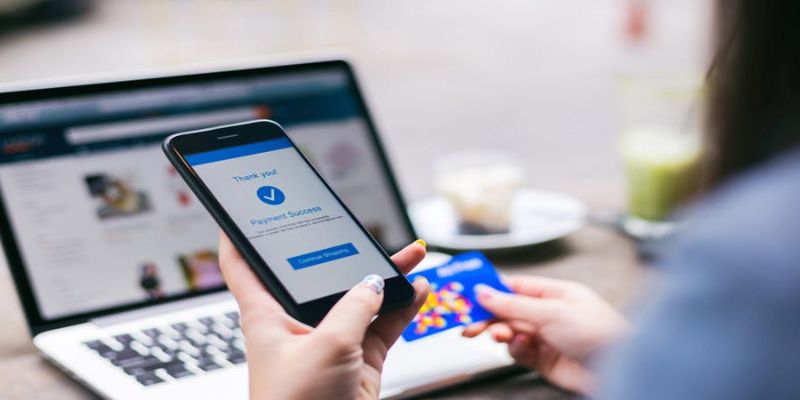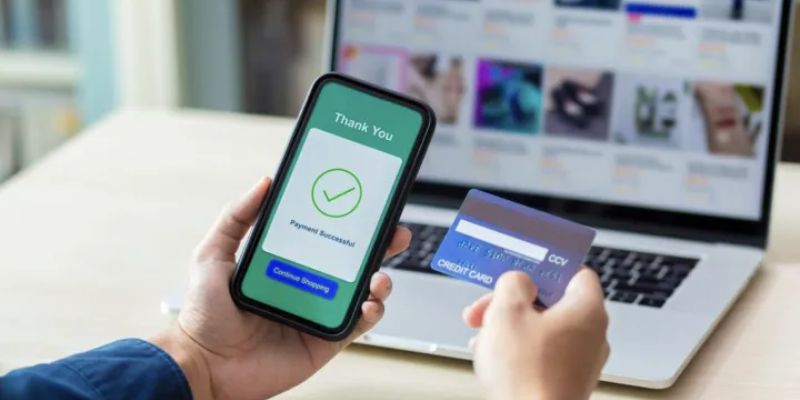How to Secure Your Finances: Mastering Digital Payment Safety
In a swipe or tap, you move cash through screens, but is it safe? How to protect your data when using digital payments matters more than ever. You’re trusting not just numbers but the coffee, the new shoes, the very stuff of life to digital whispers. I get it, the ease is tempting, but risks lurk behind those breezy transactions. And I’m here to tell you, securing your funds isn’t rocket science. With a no-nonsense approach, we’ll dive into simple, yet powerful steps to lock down your financial data. It’s time we outsmart the sneaks. Embrace strong passwords, say yes to encryption, and adopt two-factor muscle to shield your dollars. Ready to become a digital payments ninja? Let’s kick some cyber-threat butt together.
Embracing Strong Security Protocols for Digital Payments
The Essentials of Encryption in Digital Payment Systems
To keep money safe, think of encryption like a secret code for your data. It turns your personal details into code that only the right person can read. With this, even if bad guys get this code, they can’t use your info. Every time you pay with your phone or online, make sure encryption is there to protect you.
Using strong encryption is like giving your data a super shield. First, check if the payment app shows that it uses encryption. Look for things like “secure sockets layer” or a padlock symbol. These signs mean your data gets scrambled into codes that only the payment system can understand. Encryption hides your credit card numbers, so hackers can’t steal them.
When you’re buying online or with an app, your info travels through the internet. This trip can be risky. But with encryption, your personal and bank details stay hidden. Remember, always look for that padlock before you pay. It’s a quick way to make sure your data is safe.
Implementing Two-Factor Authentication for Enhanced Safety
Two-factor authentication (2FA) adds an extra step to your login process, but it’s worth it. When you log in, you’ll use your password and another check to prove it’s you. Think of it like a double lock on your front door. It stops thieves from getting into your accounts, even if they know your password.
Let’s say you want to pay with your phone. With 2FA, after putting in your password, you might get a text with a code. You need this code to finish logging in. Or, the app might ask for your fingerprint. Only your fingerprint unlocks it, right? So, if someone else tries to get in, they’re stuck.
2FA works because it uses something you know, like a password, and something you have, like your phone. So, even if someone steals your password, they can’t pay without your phone. To make digital payments safe, turn on 2FA in your payment app’s settings. It’s a strong move to keep your money secure.
Look for apps that offer 2FA to keep your details extra safe. When setting up 2FA, choose a method you’ll always have access to, like your phone. And make sure your password is tough to guess. Use a mix of letters, numbers, and symbols. Change it often, and never use easy passwords like “1234.”
Using 2FA may take a few more seconds, but it’s better than dealing with stolen money. It’s a simple step, but really powerful. It helps you spot if someone tries to break into your account.
In summary, for those who care about their money’s safety online, embracing strong security protocols is key. Encryption keeps your data secret, and 2FA adds a tough barrier for hackers. Always use both to ensure your money and information stay yours alone.

The Smart User’s Guide to Digital Wallet and Mobile Payment Safety
Recognizing and Avoiding Phishing Scams in Digital Payments
You spot a sketchy email. It says, “Click here for a free gift card!” Don’t do it! This is a common trick to steal your info, known as a phishing scam. Scammers use emails or texts that seem real but are fake. They try to get you to share personal details, like passwords or bank info. Always check who sent the message before you click. Get savvy about phishing scams to keep your money safe.
Learn to spot these frauds fast. Look for typos or odd email addresses. These are red flags. When in doubt, go straight to the company’s website instead of clicking on links. Use that keen eye of yours. Always remind yourself, “Think before you click!” Check sender details and website links twice. Don’t share key info unless you are sure. It’s better to miss out on a “deal” than to risk your financial safety.
Selecting and Using Trusted Payment Gateways
Picking the right payment gateway is key. It’s like choosing the best lock for your door. Look for ones that are well-known and respected. These gateways should encrypt your info as it travels. This way, your credit card numbers and such are kept secret from any prying eyes.
A good gateway also asks for two-factor authentication. What does that mean? It’s a second check to make sure it’s really you. Like when you enter a password, then get a code on your phone too. Double-checking is always smart. So when you buy online or use your phone to pay, think, “Is this gateway solid?” Make sure they value your safety as much as you do.
Using safe ways to pay helps you avoid bad surprises later. It’s pretty simple. If it doesn’t feel secure, don’t use it. Stick to the options that make you feel safe. Remember, your peace of mind is priceless.

Advanced Prevention Techniques for Safeguarding Financial Data
The Role of Tokenization in Securing Online Transactions
Tokenization turns your card details into a unique code. It’s like a secret alias for your payment info. Each time you pay, this code, or “token,” is used—not your real card number. This means if hackers strike, they get a useless token, not your card. Tokenization is key in digital payment security measures.
Banks and stores use tokenization to keep your card safe. When you use a digital wallet, tokenization occurs. It replaces your card info with a secure token during the transaction. This token works just once, so it’s extra secure.
The Importance of Regular Monitoring and Detecting Fraudulent Transactions
Always check your account for odd charges. It’s the best way to catch theft fast. Getting alerts for every purchase can help. Spotting weird charges? Act fast. Call your bank and report it. They’ll take it from there.
Regular checks mean you’re aware of what’s happening with your money. Suspect a fishy transaction? That could mean someone’s got hold of your card info. Look for small, strange payments—thieves test with these first. Besides checking yourself, use bank tools that spot and stop fraud.
Using digital payment security measures needs close attention. A part of personal cybersecurity practices includes knowing your typical spending. This way, spotting unauthorized purchases becomes easier. Update your payment apps often. Updated apps have the latest safety features to block hackers.
When paying online or through mobile apps, be proactive. Use secure mobile payments and keep your financial data encryption updated. This ensures your info stays between you and your trusted payment gateways. Always ask, “Is this payment platform secure?”
Phishing is a trick to steal your info. Avoid phishing scams in digital payment by checking who emails or texts you. If it’s unknown or seems off, it’s likely a scam. They may ask for passwords or account details—don’t share them.
A solid strong password strategy for electronic payments is a must. Use a mix of letters, numbers, and symbols. Change them often. Two-factor authentication payments add another layer of safety. This means you need both a password and a code from your phone to access accounts.
It’s wise to avoid public Wi-Fi for payment safety. Public networks can be unsafe. VPN for financial transactions encrypts your data even on public Wi-Fi. This keeps your info safe as it travels the internet.
Lastly, adopt robust authentication methods like biometric options. Your fingerprint or face can secure your payments even more than a password.
Stay sharp with these tips to fight against digital payment fraud. Secure your money by mastering how you pay and watch. With smart choices and tools, your finances stay shielded in the digital wave.

Adopting Personal Cybersecurity Best Practices
Secure Internet Practices for Online Payments
Secure online payments must start with safe internet practices. Always use a trusted network. Avoid public Wi-Fi for your banking and shopping. Hackers could be lurking. Use a VPN to protect your data on any network, especially if you’re mobile. It’s like a private tunnel for your data.
Encryption is your best friend when making digital payments. It scrambles your financial info so only intended parties can read it. Most secure payment platforms will have strong encryption in place. That’s your green light to proceed.
Remember, staying current with updates is important. They often have fixes for security bugs. Even if update reminders nag, they’re vital for your safety.
Staying Updated: The Value of Regularly Updating Payment Apps and Devices
Keeping your payment apps and devices up to date is a top digital payment security measure. New threats pop up daily. Software developers work hard to keep up, so help them help you. Install those updates. They’re not just new features; they’re new armor against threats.
Do you update your payment app regularly? You should. When an update comes out, it often patches security holes. Cybercriminals love those holes—they’re like unlocked doors to your financial data. Updating may seem tedious, but think of it as locking those doors tight.
Being proactive is key in protecting credit card information and more. This includes setting up alerts for suspicious account activity. If something looks off, you’ll know fast. This gives you the edge to avoid digital payment fraud.
Strong passwords are a must—it’s a simple, but powerful, barrier. And please, no more ‘1234’ or ‘password’. Make it tricky for any unwelcome guests trying to crash your digital payment party.
Two-factor authentication (2FA) is another layer of defense. It’s like a security guard for your accounts. First, you enter your password; then an extra step confirms it’s really you. Maybe a text with a code or a thumbprint—you decide.
Remember, personal cybersecurity practices don’t stop with you. Share what you know. Teach friends and family how to be safe with their digital wallet usage. Good habits spread and can help protect us all.
It’s clear: with a blend of secure internet connections, smart device payment protection, and a solid strategy for managing updates and passwords, you can shop and bank online with more peace of mind. Stay vigilant, stay informed, and keep your digital finances locked down tight.
In this post, we’ve tackled how to keep your money safe in the digital world. From using encryption to two-factor authentication, we’ve covered key steps to secure your digital payments. We also looked at smart ways to use digital wallets and dodge scams. Always choose trusted gateways for your transactions.
We then dived into advanced ways to protect your financial data, like tokenization and staying sharp to spot fraud. Finally, we wrapped with personal cybersecurity must-dos, like safe internet habits and keeping your payment apps up to date.
Here’s the bottom line: Staying safe with digital payments is a mix of smart tech and smarter habits. Use the tools, stay alert, and keep learning. That’s how you protect your cash online. Now, go out there and pay with confidence!
Q&A :
What Steps Can I Take to Secure My Data With Digital Payments?
Securing your data during digital payments is critical to protecting your financial information from fraud and theft. Start by using strong, unique passwords for your payment accounts and change them regularly. Ensure that your device’s operating system and payment apps are updated to the latest versions. Always use a secure connection, avoid public Wi-Fi when conducting transactions, and consider using a VPN. Enable multifactor authentication where available, monitor your bank statements regularly for any unauthorized transactions, and be vigilant against phishing scams that attempt to steal your credentials.
Are Digital Payment Methods Safe to Use?
Digital payment methods are designed with security measures in place, such as encryption and tokenization, to protect your data during transactions. They can be considered safe to use when you follow best practices for security. It’s important to only use reputable payment apps and services, never share your personal PIN or passwords, and use your device’s built-in security features, such as biometric authentication. Additionally, reputable digital payment providers comply with industry standards like PCI DSS to ensure your data is protected.
How Do I Protect Myself From Digital Payment Fraud?
To protect yourself from digital payment fraud, it’s essential to be proactive about monitoring your accounts. Set up alerts for any transactions, which can help you catch any unauthorized activity quickly. Be cautious with your click-throughs, especially with links in emails or messages that could potentially be phishing attempts. Shop on secure and legitimate websites, and look for the HTTP Secure (HTTPS) protocol in the webpage URLs. Never share your sensitive information online unless you are sure the environment is secure.
What to Do if You Suspect Your Digital Payment Information Has Been Compromised?
If you suspect that your digital payment information has been compromised, act immediately. Contact your bank or the financial institution connected to the payment method to report the issue and possibly freeze or cancel your cards or accounts. Change your passwords and login credentials for all related services. Review your recent transactions for any unauthorized activity, and set up additional monitoring or alerts. In severe cases, you may need to reach out to the credit bureaus to set up fraud alerts or a credit freeze on your accounts.
Can Using Digital Wallets Help Protect My Payment Data?
Digital wallets can enhance the protection of your payment data due to their advanced security features. They usually employ tokenization, which substitutes your actual card details with a unique digital token during transactions. This means that your real card number is not shared with the merchant and is less susceptible to being intercepted by cybercriminals. Furthermore, digital wallets often require additional user authentication, such as a fingerprint or facial recognition, providing an extra layer of security. Use digital wallets from trusted providers and enable all available security features for maximum protection.

